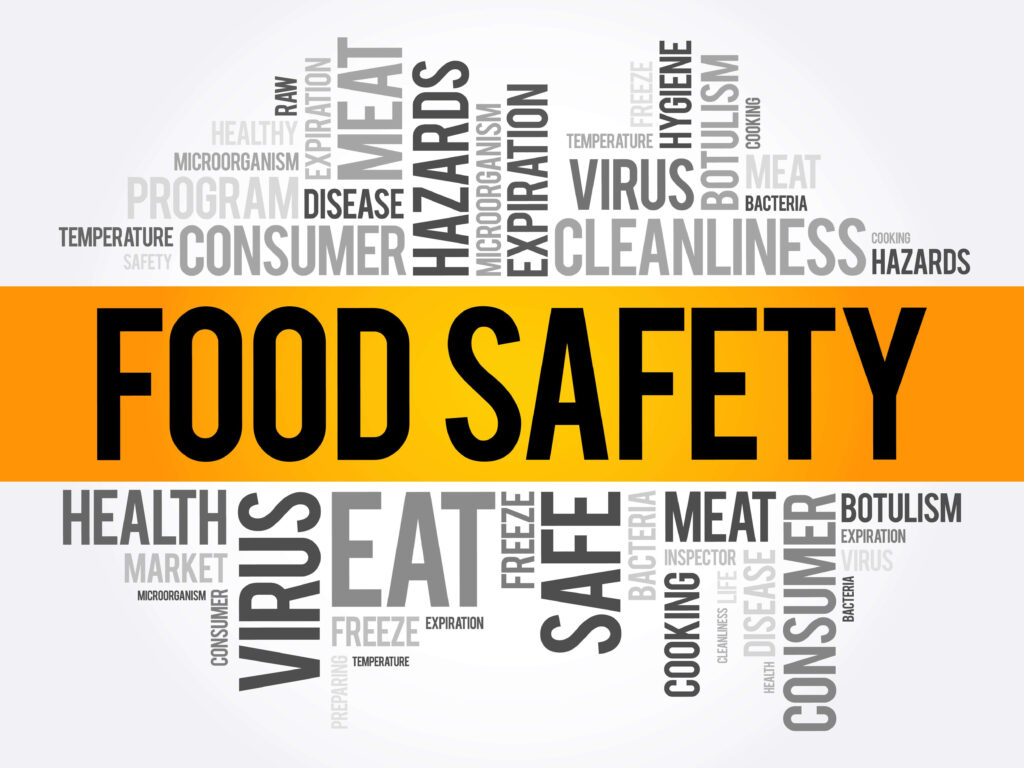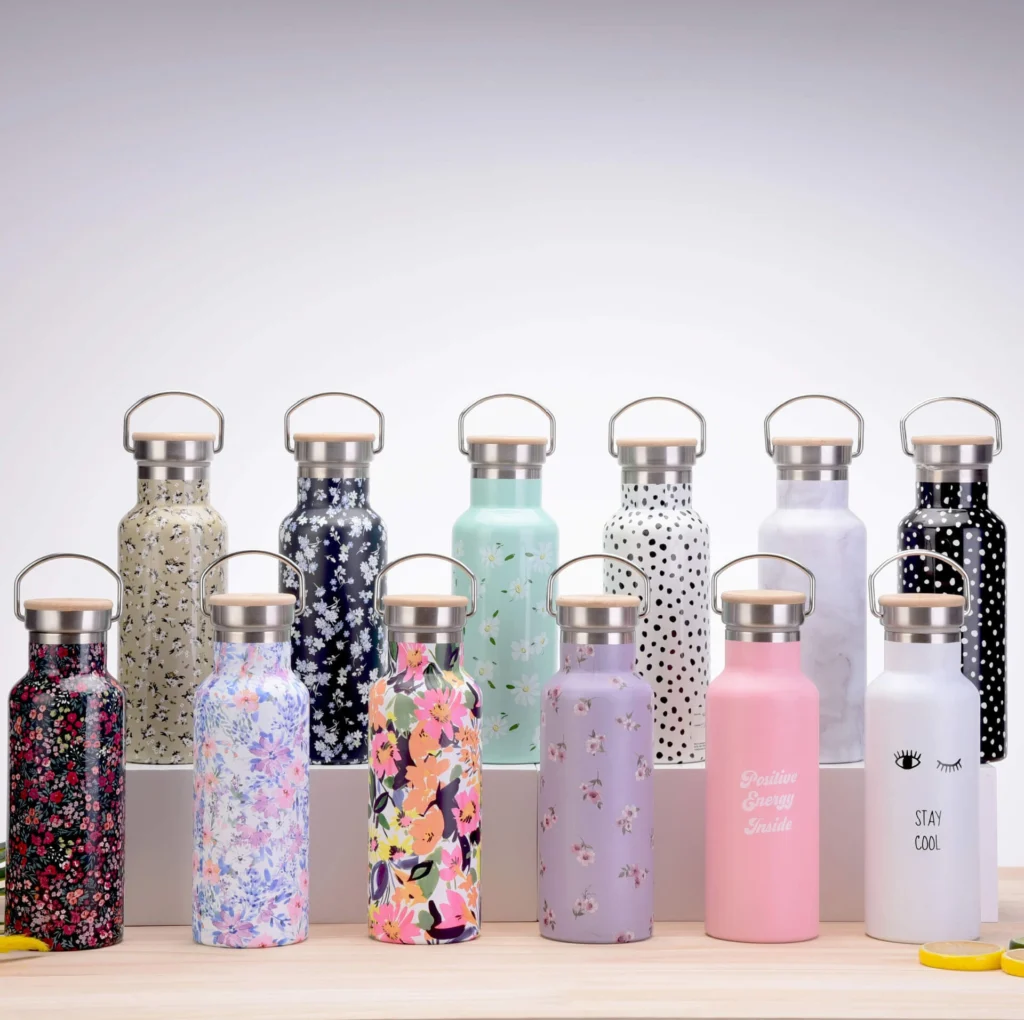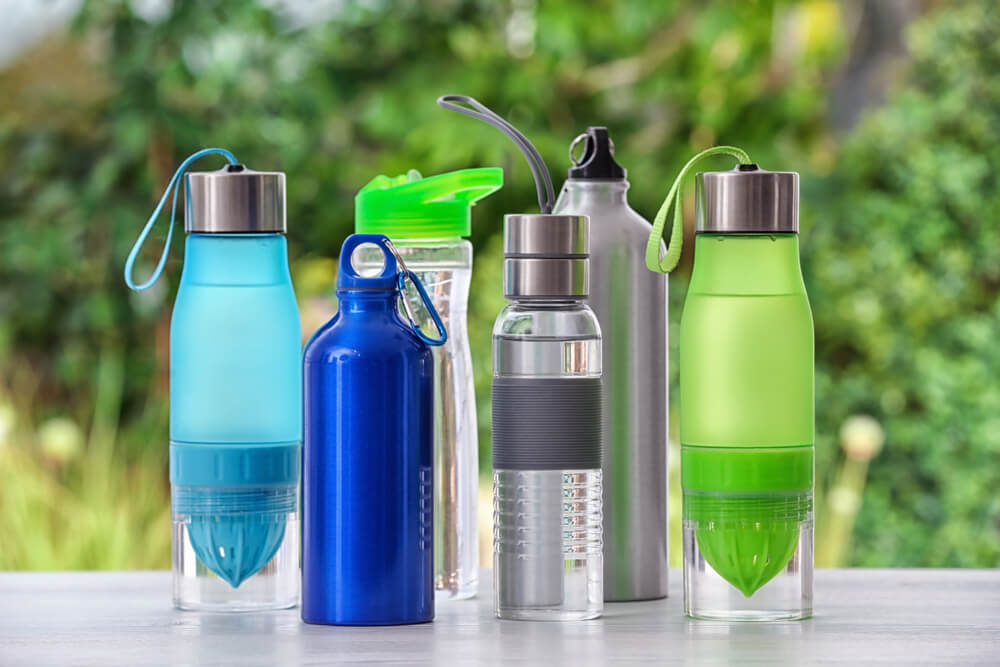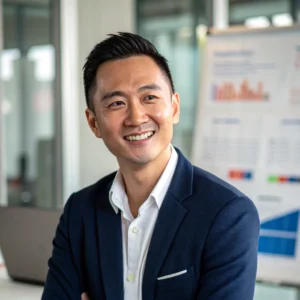If you're concerned about the safety of your child's water bottle, you may be wondering if stainless steel water bottle is a good choice. After all, there have been rumors that stainless steel water bottle can contain harmful chemicals or leach metals into your child's drink. But before you toss out all your stainless steel bottles, it's important to understand the facts and separate myth from reality.
In this article, we'll explore the concerns surrounding stainless steel water bottles for kids and look at the regulations and standards in place to ensure their safety. We'll also discuss the benefits of using stainless steel as a material for water bottles and provide tips on how to choose the right one for your child.
Whether you're looking for an alternative to plastic or just want to make sure your child stays hydrated safely, read on to learn more about whether stainless steel water bottles are safe for kids.
Understanding the Concerns About Stainless Steel
If you're wondering if stainless steel water bottles are safe for kids, it's important to understand the potential concerns. While stainless steel is generally considered a safe and durable material for food and drink containers, some people may have concerns about the possible leaching of metals from the bottle into the contents.
One alternative to stainless steel is plastic, but this material has its own set of concerns. Plastic water bottles can contain harmful chemicals like bisphenol A (BPA) or phthalates that can leach into the contents of the bottle over time. Additionally, plastic is not as eco-friendly as stainless steel because it takes much longer to break down.
Another concern with stainless steel water bottles is their eco-friendliness. While they are reusable and can last a long time, they still require resources and energy to manufacture and transport. However, choosing a high-quality stainless steel bottle that will last for years can help offset these environmental impacts by reducing waste from single-use plastic bottles.
Regulations and Standards for Stainless Steel

When it comes to regulations and standards for stainless steel, there are some important things parents should know.
First of all, the United States Food and Drug Administration (FDA) has strict guidelines for the use of materials in food containers. Stainless steel is considered safe for food contact as long as it meets certain criteria, such as being corrosion-resistant and not reacting with acidic foods or beverages.
To ensure that stainless steel water bottles meet these standards, manufacturers often use high-grade 18/8 stainless steel, which is durable and resistant to rust and corrosion.
Additionally, many products are tested by independent third-party organizations like NSF International to verify that they comply with safety regulations.
It's also worth noting that stainless steel containers do not have the same concerns as plastic water bottles, such as BPA or other chemicals leaching into drinking water. Because they are made of metal rather than plastic, there is no risk of harmful substances leaching into your child's drink.
Overall, a high-quality stainless steel water bottle is a great choice for a safe and durable option for your child's hydration needs.
Benefits of Stainless Steel Water Bottles

One major advantage of using high-quality stainless steel containers for your child's drinks is that they're incredibly durable and long-lasting. Unlike plastic bottles that can easily break or crack, stainless steel water bottles are built to last. This means you won't have to replace them as often, saving money in the long run.
Additionally, because they're so durable, they're less likely to cause accidents or spills. Another benefit of using stainless steel water bottles is their environmental impact. Unlike disposable plastic water bottles, which contribute significantly to landfills and pollution, stainless steel bottles can be used over and over again without creating any waste.
By choosing a reusable option like a stainless steel bottle for your child's drinks, you're helping reduce your family's carbon footprint. When it comes to health concerns about plastics leaching chemicals into drinks, stainless steel provides an excellent alternative. Stainless steel doesn't contain harmful chemicals like BPA or phthalates that can leach into beverages from plastic containers.
It's also non-reactive with acidic drinks such as fruit juices or sports drinks. Choosing a stainless steel water bottle ensures that your child's drinks stay safe and chemical-free while also being environmentally friendly and highly durable.
Choosing the Right Stainless Steel Water Bottle

When choosing a stainless steel water bottle, there are several key points to consider. First and foremost, it's important to look for bottles that are BPA-free, as this chemical can be harmful to your health.
Additionally, you should consider the grade of stainless steel used in the bottle to ensure its durability and resistance to corrosion.
Finally, checking for certifications from reliable organizations can provide added peace of mind that your chosen bottle is safe and high-quality.
Look for BPA-Free Bottles
You'll want to ensure your child's safety by choosing stainless steel water bottles that are BPA-free. Bisphenol A (BPA) is a chemical commonly found in plastic products, including some water bottles. According to the National Institute of Environmental Health Sciences, exposure to BPA can lead to developmental problems, behavioral issues, and other health concerns for children.
To make sure that your child's stainless steel water bottle is free from harmful chemicals like BPA, look for these eco-friendly options:
- Bottles labeled 'BPA-free': These are specifically designed without the use of BPA in their production.
- Stainless steel with no plastic lining: Some stainless steel bottles may have a plastic lining that contains traces of BPA or other chemicals.
- Brands with good reputations: Look for brands with a reputation for using safe materials in their products.
- Third-party testing certifications: Some companies choose to have their products tested by third-party organizations to prove their safety and quality.
By following these guidelines when selecting a water bottle for your child, you can be confident that they will stay hydrated while avoiding any potential harm from harmful chemicals like BPA. Additionally, durable options like stainless steel also provide peace of mind knowing that the bottle won't break easily and cause injury or waste due to constant replacements.
Consider the Grade of Stainless Steel
Now that you know to look for BPA-free bottles, let's talk about the grade of stainless steel.
When it comes to choosing a stainless steel water bottle for your child, not all grades are created equal. Stainless steel grades refer to the quality and composition of the metal used in making the bottle.
The most common grades used in water bottles are 18/8 and 304 stainless steel. These grades have high corrosion resistance and are safe for use with food and beverages.
However, some lower-grade stainless steels may contain harmful chemicals such as lead or cadmium, which can leach into the liquid over time. To ensure the safety of your child, it's important to choose a water bottle made from high-quality stainless steel that meets safety standards.
Check for Certifications
Make sure to look for certifications when choosing a reusable bottle for your little ones. Certification requirements and safety standards are important factors to consider when selecting a stainless steel water bottle.
Here are some things to keep in mind:
- Look for bottles that have been certified by organizations such as the NSF, ANSI, or FDA.
- Check if the bottle is BPA-free and phthalate-free.
- Make sure that the materials used in the bottle meet safety standards.
- Read reviews from other parents who've purchased the same product to see if there've been any issues with safety or quality.
By taking these steps, you can ensure that your child's stainless steel water bottle is safe and meets all necessary certification requirements and safety standards. Remember, it's always better to be cautious when it comes to your child's health and well-being.
Cleaning and Maintenance of Stainless Steel Water Bottles
When it comes to maintaining your stainless steel water bottle, there are a few key points to keep in mind.
First and foremost, proper cleaning techniques are crucial for ensuring that your bottle remains free of harmful bacteria and odors.
Additionally, avoiding scratches and dents can help prolong the life of your bottle, while replacing damaged bottles is essential for ensuring that you have a safe and effective way to stay hydrated on the go.
Proper Cleaning Techniques
To keep your child's stainless steel water bottle clean, it's important to properly dry it after washing. Leaving moisture inside the bottle can lead to bacteria growth and a foul odor. Hot water sterilization can be used periodically to ensure that any lingering bacteria are eliminated.
If you need a deeper clean than just soap and warm water, vinegar or baking soda can also be effective options for cleaning stainless steel bottles. Simply fill the bottle with equal parts vinegar (or baking soda) and warm water, let it sit for a few hours or overnight, then rinse thoroughly with hot water. This method can eliminate stubborn stains and odors while still being safe for your child's use.
Remember to always read the manufacturer's instructions before using any cleaning products on your stainless steel water bottle.
Avoiding Scratches and Dents
Now that you know how to properly clean your stainless steel water bottle, it's important to also prevent scratches and dents from occurring. Scratches not only affect the aesthetic appeal of your bottle but can also harbor bacteria, affecting its safety for use. Dents can also compromise the integrity of the bottle and potentially cause leaks or spills.
To avoid these issues, consider these durability tips when using a stainless steel water bottle for kids:
- Choose a kid-friendly design with thick walls and protective features to decrease the likelihood of damage.
- Avoid dropping or exposing the bottle to extreme temperatures as this can cause dents and scratches.
- Consider customization options such as silicone sleeves or decals that add an extra layer of protection.
By following these tips, you can ensure that your child's stainless steel water bottle remains safe and in good condition for everyday use.
Replacing Damaged Bottles
If your child's reusable stainless steel water bottle has been damaged, it might be time to consider purchasing a replacement option that can withstand more wear and tear. While scratches and dents on the surface of the bottle may not seem like a big deal, they can create small crevices where bacteria can grow and thrive. This is especially concerning if your child uses their water bottle frequently throughout the day.
Before you throw away a damaged stainless steel water bottle, consider recycling it instead. Many cities have programs that allow residents to recycle metal containers, including beverage cans and food containers. Make sure to rinse out the inside of the bottle before placing it in your recycling bin.
If your city does not offer curbside recycling for metal containers, check with local scrap yards or recycling centers to see if they accept stainless steel bottles. Safe disposal of damaged bottles helps reduce waste in our environment while also keeping hazardous materials out of landfills.
Alternative Materials for Water Bottles

If you're looking for alternative materials for water bottles, there are a few options to consider.
Glass is one option that's completely free of any potential chemicals or toxins.
BPA-free plastic is another option, as it eliminates the risk associated with traditional plastic bottles.
Finally, aluminum bottles are lightweight and durable but may require an inner coating to prevent chemical leaching.
Glass
You'll love how glass water bottles not only provide a safe option for your kids but also give them a sleek and stylish way to stay hydrated. Unlike stainless steel, glass is non-reactive, meaning it won't leach any harmful chemicals into your child's drink. Additionally, glass is easy to clean and doesn't retain any flavors or odors from previous drinks.
Another advantage of glass over stainless steel is that it's completely recyclable and eco-friendly. You can rest assured knowing that your child's water bottle won't end up in a landfill or contribute to environmental pollution.
However, it's important to note that there are potential hazards of using glass water bottles with children, such as breakage and shattering. It's crucial to supervise young children while they're using their glass water bottle and make sure they handle it with care.
Overall, if you're looking for a safe and sustainable alternative to stainless steel water bottles for your kids, glass is definitely worth considering.
BPA-Free Plastic
Now that we've talked about glass water bottles, let's move on to another popular material for kids' water bottles: BPA-free plastic.
While glass has its benefits, it can be heavy and breakable - not exactly ideal for young children who are prone to accidents. That's where eco-friendly alternatives made from BPA-free plastic come in handy.
BPA (bisphenol A) is a chemical often found in traditional plastic products that can leach into liquids and potentially cause health problems. However, BPA-free plastics have become more widely available in recent years as concerns about the risks of plastic bottles have grown.
These alternative plastics are generally considered safe for everyday use and offer a lightweight, durable option for kids' water bottles.
Aluminum
Aluminum is a popular material for eco-friendly water bottles due to its lightweight and durable properties. It's also highly recyclable, making it an environmentally responsible choice. Aluminum water bottles are often coated with non-toxic materials to prevent potential health risks.
Understanding the benefits of aluminum water bottles is important when considering them as an alternative to stainless steel. While both materials are durable and long-lasting, aluminum is lighter in weight, making it easier to carry around. Additionally, aluminum has a lower carbon footprint than stainless steel because it requires less energy to produce and transport.
However, stainless steel may be a better option if you prefer a heavier bottle or one that can withstand harsher conditions. Ultimately, the decision between aluminum and stainless steel comes down to personal preference and specific needs.
Common Myths About Stainless Steel Water Bottles
Don't believe the myths you've heard about stainless steel water bottles! There are several misconceptions out there that might make you question the safety of using a stainless steel water bottle for your kids. But rest assured, these claims have been debunked by experts and studies.
One common myth is that stainless steel water bottles can leach dangerous chemicals into your drink. However, this is not true as long as you choose a high-quality bottle made from food-grade stainless steel. These types of bottles are non-reactive and won't alter the taste or quality of your beverage.
Another myth suggests that drinking from a stainless steel water bottle can cause metal poisoning. Again, this simply isn't true. Stainless steel is a safe and durable material that has been used in many household items for years without causing any harm to humans. In fact, using a stainless steel water bottle has numerous health benefits over plastic or aluminum alternatives, including being BPA-free and reducing waste by avoiding single-use plastic bottles.
So don't be swayed by unfounded rumors about the safety of stainless steel water bottles for kids. As long as you choose a reputable brand made from food-grade materials, they are a safe and healthy option for keeping your family hydrated on-the-go.
Tips for Encouraging Kids to Use Water Bottles
Encouraging your little ones to use refillable hydration containers can be made easier with these simple tips.
First and foremost, consider getting water bottles with fun designs or characters that your kids will love. This will make them more likely to use the bottle and want to bring it with them wherever they go.
Another way to encourage water bottle usage is by incorporating it into your family's daily routine. For example, make it a habit for everyone to grab their water bottle before leaving the house in the morning or before heading out on a family outing. This helps build consistency and reinforces the importance of staying hydrated.
Lastly, consider implementing a rewards system for consistent water bottle use. For instance, offer small incentives such as stickers or extra playtime when your child remembers to bring their water bottle throughout the day. This positive reinforcement can help establish healthy habits and encourage your child's independence in taking care of their own needs.
By following these tips, you can help create an environment where using refillable hydration containers becomes second nature for your little ones. Not only does this promote healthy habits early on but it also reduces waste from disposable plastic bottles, making it a win-win situation for both you and the environment!
Additional Safety Precautions for Kids
Furthermore, it's imperative to take into account additional precautions to ensure the safety of children when using refillable hydration containers.
While stainless steel water bottles are generally a safe option for kids, parents should consider choosing child-friendly designs that are easy for small hands to hold and drink from. Bottles with wide mouths or straws may be easier for younger children to use.
It's also important for parents to supervise their children while they're using water bottles. This is especially crucial for younger children who may not understand how to properly use the bottle or when it's appropriate to drink from it.
Parents should also monitor their child's intake of fluids throughout the day and encourage them to drink water regularly.
Parents should make sure that their child's water bottle is clean and free of any harmful bacteria. They can do this by washing the bottle regularly with soap and hot water or by running it through a dishwasher cycle.
By taking these additional safety precautions, parents can help ensure that their child stays hydrated safely and effectively throughout the day.
Conclusion
In conclusion, stainless steel water bottles are generally safe for kids as long as they meet regulations and standards. They offer many benefits such as durability, affordability, and the ability to keep drinks at a consistent temperature.
However, it's important to choose the right bottle and properly clean and maintain it to ensure safety. If you have concerns about using stainless steel water bottles for your child, there are alternative materials available such as glass or BPA-free plastic.
It's also important to encourage your child to use a water bottle regularly by making it fun and personalized for them. Remember to always prioritize your child's safety when selecting a water bottle.
With proper research and care, stainless steel water bottles can be a great option for keeping your kid hydrated on-the-go.

